THE CREATIVITY
BEHIND CHEMISTRY
UH Graduate Student Jacklyn N. Hall Gains National Recognition For Catalysis Research
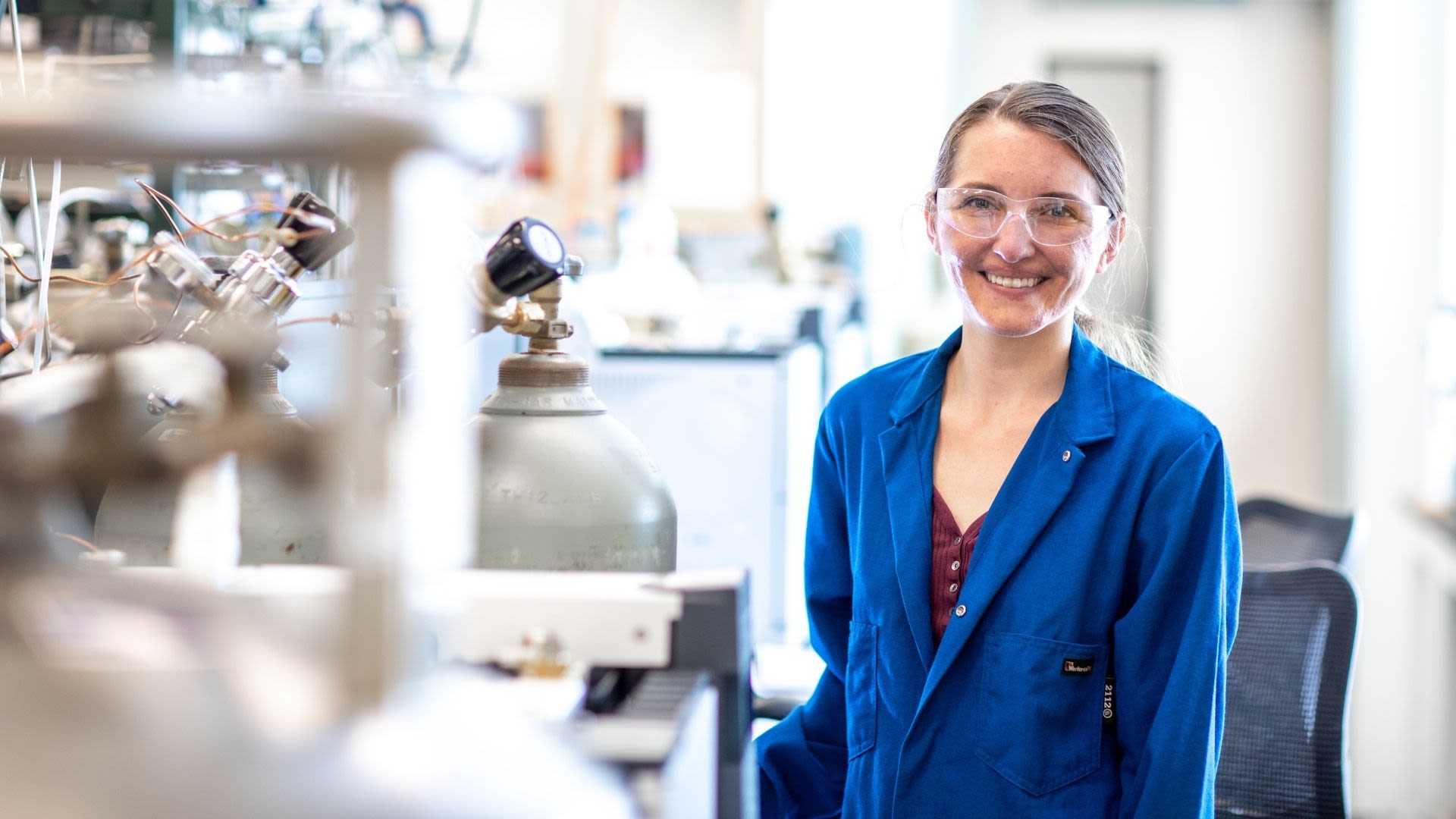
Everyone knows what it feels like to have a hunch— an inclination of what might come to pass beyond facts. It could apply to anticipating the end of a movie, for example, and in the all-too familiar novel The Hobbit by J.R.R. Tolkien, Bilbo Baggins has a hunch that going on an adventure with Gandalf beyond the safety of his town would mean change, but – eventually – he embraces it.
That is how Jacklyn N. Hall, graduate student and research assistant at the Cullen College of Engineering at the University of Houston, approaches her work. Like Bilbo Baggins in her favorite book, despite her subtle demeanor she invites adventure. Each hunch is a hypothesis and each experiment in the lab a new creative adventure to test the bounds of conjecture and make sense of the unknown. And there is change at the end of it all too, chemical change.
Hall’s research in catalysis – or expediting a chemical reaction using a catalyst – recently garnered her the recognition of the Department of Energy (DoE) Office of Science, for participation in the highly exclusive Science Graduate Student Research (SCGSR) program. Hall is one of 78 students selected nationwide to participate in the program, with an opportunity to work with the Argonne National Laboratory outside of Chicago, Illinois.
“I get to be creative on a daily basis, come up with different experiments and test my hypotheses. It motivates me and makes me passionate about learning.”
“I admire the work done at national labs so this is a great opportunity for me. I would love to work at a national lab in the future.”
“The DOE SCGSR award program identifies outstanding graduate students to tackle mission-critical research at national labs, and is highly competitive,” Praveen Bollini, assistant professor at the department of chemical and biomolecular engineering at the University of Houston and Hall’s advisor, said. “The award is a testament to the outstanding research Jacklyn has been conducting for the past three years as a graduate student and will help amplify the impact of her work even further.”

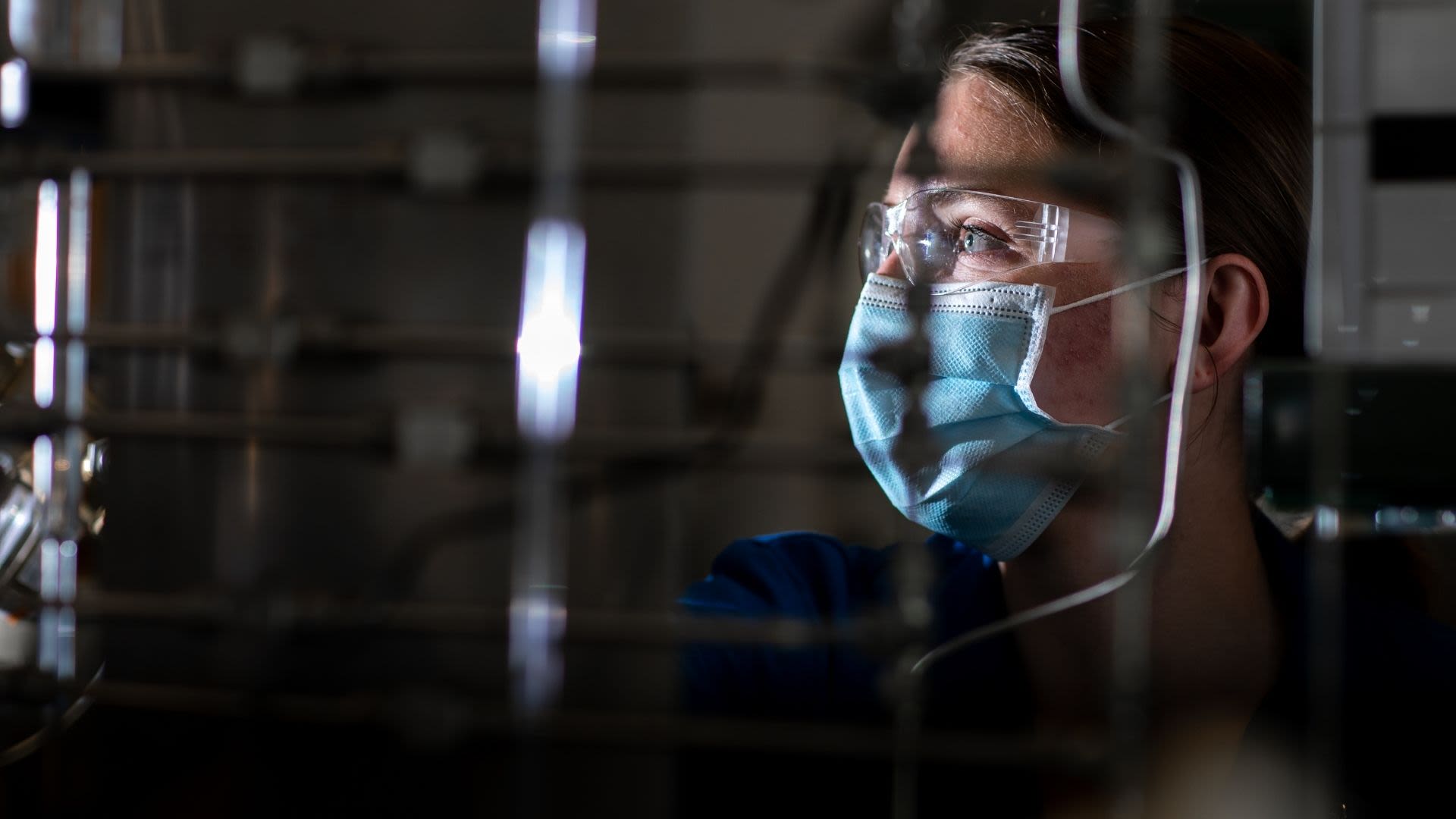
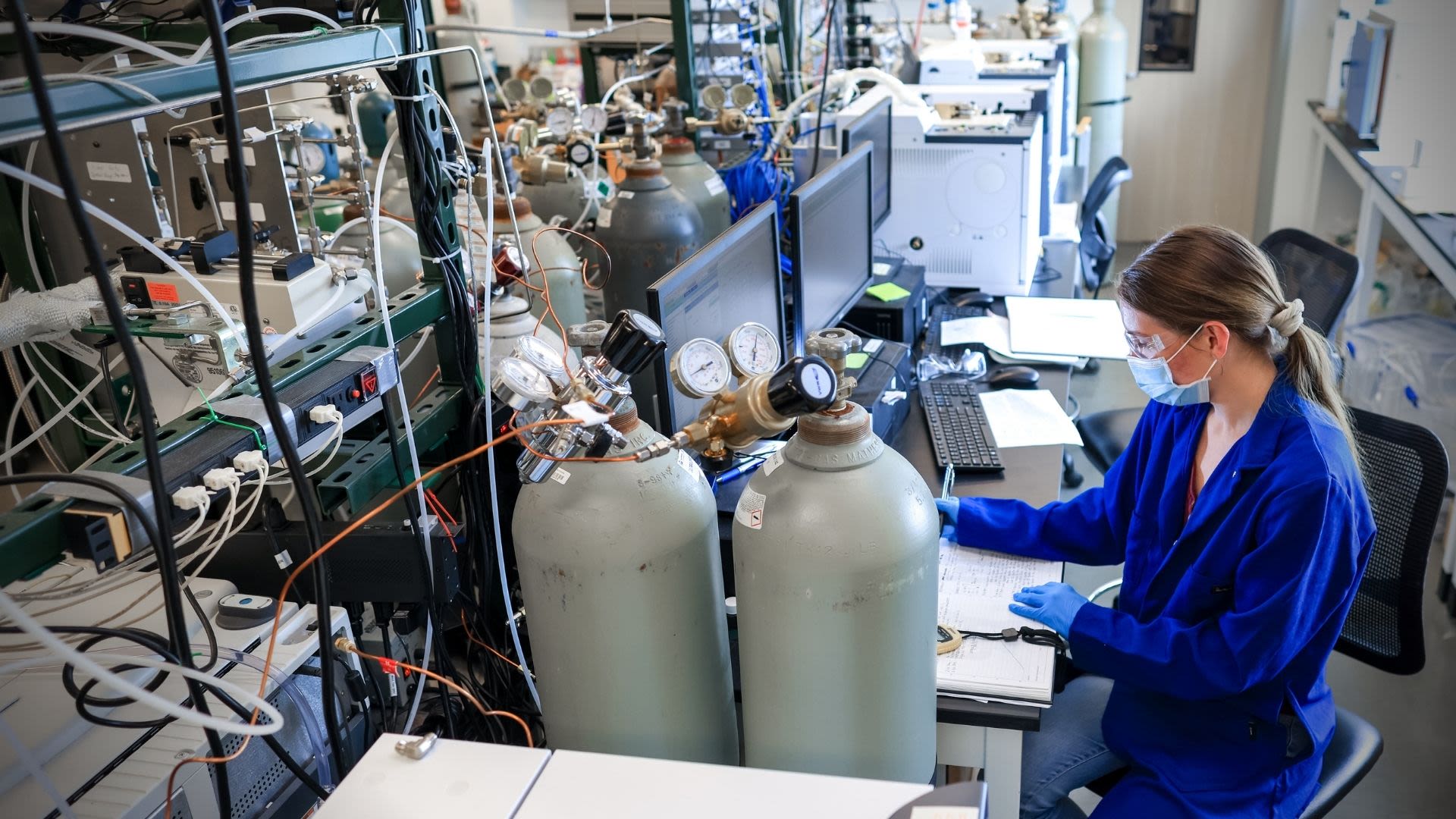

A rig outside of Big Spring, in West Texas, flares excess natural gas, most of which is methane. Photo credit: Getty Images
A rig outside of Big Spring, in West Texas, flares excess natural gas, most of which is methane. Photo credit: Getty Images

Researchers are working to convert methane to an alcohol like methanol, a highly versatile chemical widely used for industrial purposes and prevalent in our everyday lives. Photo credit: Getty Images
Researchers are working to convert methane to an alcohol like methanol, a highly versatile chemical widely used for industrial purposes and prevalent in our everyday lives. Photo credit: Getty Images
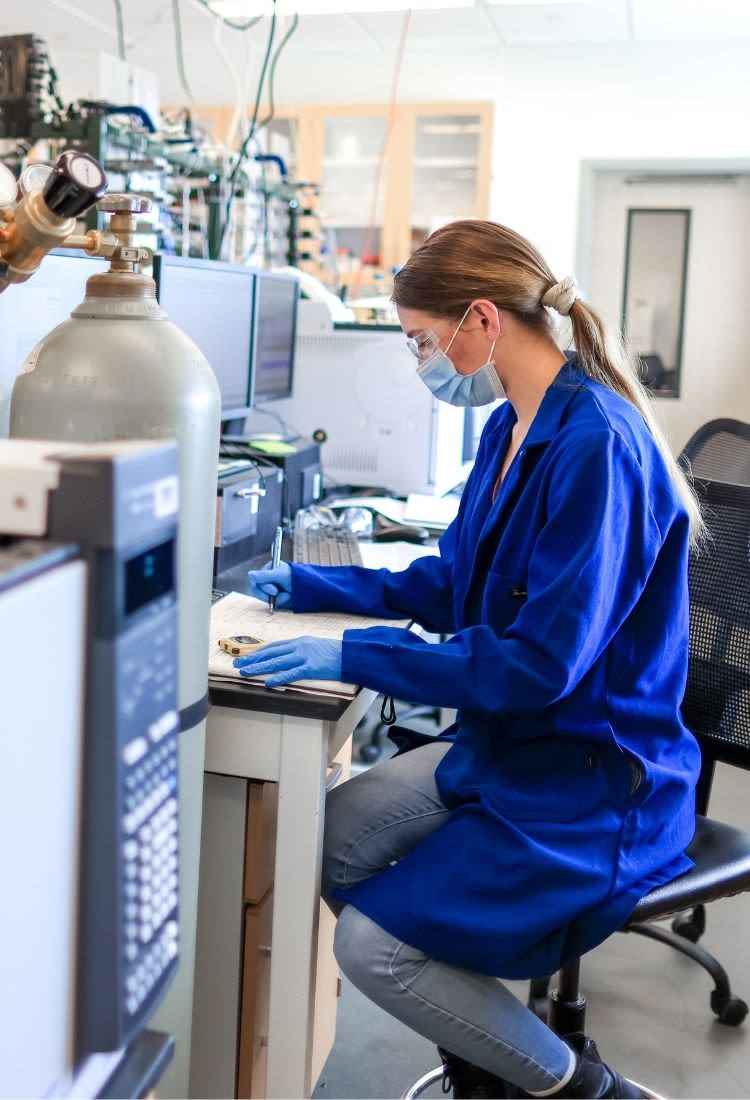
Hall works on an experiment in the lab at the University of Houston.
Hall works on an experiment in the lab at the University of Houston.

THE MISSION-CRITICAL RESEARCH
Hall's research specifically involves the conversion of the greenhouse gas methane to methanol, a useful petrochemical. When oil rigs in the Permian Basin in West Texas flare or vent natural gas that comes out when drilling and producing, over 90% of that gas is methane. Initially, when well counts increased sharply following the shale revolution as fracking techniques gave access to far greater oil reserves previously inaccessible, that excess natural gas found with it was burned off. In recent years, interest has grown to find a process for oxidizing – or gaining of oxygen – methane (CH4) to alcohols such as methanol (CH3OH) that can be carried out at remote drilling locations.
Unlike methane’s use to generate power, methanol is a useful chemical to make, among many derivatives, formaldehyde—used in the construction, coatings and adhesives industries—as well as acetic acid for photographic film, synthetic fibers and even a main component in vinegar. Beyond the chemical industry, efforts to make methanol an essential part of road transportation via gasoline blends and marine fuel efforts to reach lower carbon dioxide (CO2) specifications is also underway, per the Methanol Institute.
“The difficulty with oxidizing methane to a more useful chemical is the need for high temperatures or high pressures. A lot of scientists are focused on facilitating this reaction in more mild conditions to make it more energy efficient and more economically viable,” Hall said.
The process of oxidizing methane to methanol is a key process in the energy transition for contributing to a carbon net zero future, a mission that is central to the mission of UH Energy— the University’s collective effort to produce a trained workforce, needed innovations and new technologies for the energy industry.
“Mitigating natural gas flaring and venting from stranded assets in the Permian and other remote predominantly oil plays requires a cost-effective and environmentally friendly method to convert the natural gas to liquids that can be trucked or piped,” Ramanan Krishnamoorti, chief energy officer for UH Energy at the University of Houston said.
“This has been one of the key goals of the hydrocarbon industry to lower its environmental footprint. The research that Jacklyn will be advancing with researchers at the DOE labs will provide scalable and affordable technology innovations that are going to be transformative.”
THE NEXT STEP
The opportunity for Hall to work with scientists at Argonne National Laboratory outside of Chicago will allow her improved access to X-ray spectroscopy technology that can be used to examine similarities between the synthetic catalysts described in her research and bacteria in nature that perform similar methane to methanol oxidation functions. The advantage of the synthetic catalyst is the capacity to increase the scale of the reaction to work in industry by increasing targeted reactive sites that improve selectivity in chemical reactions. But X-ray spectroscopy is needed to better understand the process of synthetic catalysts.
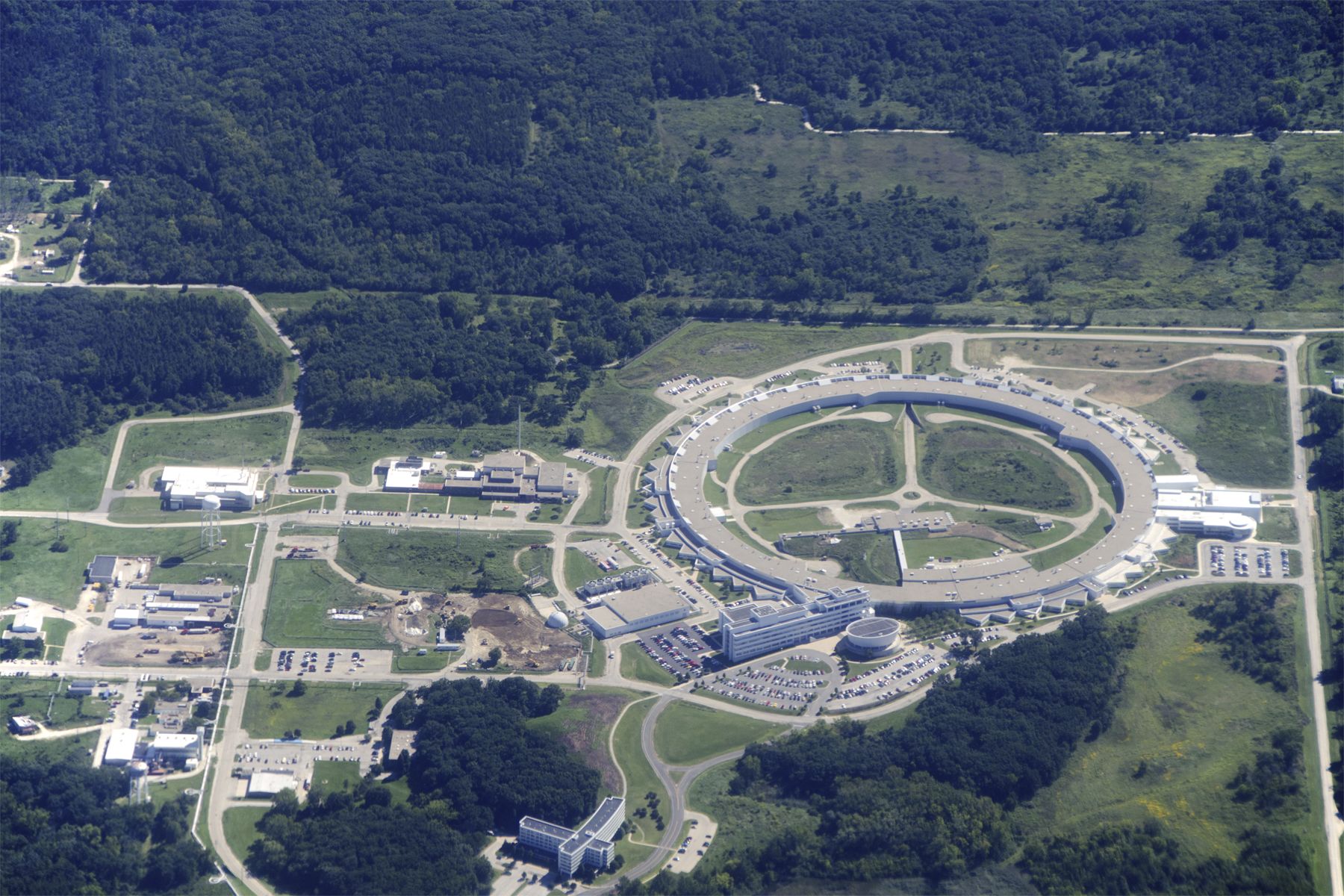
Advanced Photon Source at Argonne National Laboratory generates high energy x-ray beams for research. Photo credit: Getty Images
Advanced Photon Source at Argonne National Laboratory generates high energy x-ray beams for research. Photo credit: Getty Images
“Jacklyn has discovered and reported, for the first time, a catalyst in which every available site catalyzes methane to methanol conversion,” Bollini said.
“This could lead to a paradigm shift in the way we think about converting shale gas resources to value-added chemicals. Advanced X-ray based techniques available at Argonne National Lab will allow her to better understand the nature of active sites involved in methane conversion to methanol.”
The niche field of catalysis and spectroscopy is not one that Hall knew she wanted to study as a child. She wanted to be an astronaut. And while perhaps her specialization in chemical engineering is not as easy to explain at a cocktail party – and to her parents – her interest in the field comes from a place of altruism and wonder.
“I do not know if I will ever see the broader implications of my work,” Hall said, “but it is nice to think that it could have relevance in the future by making processes more energy efficient or by helping reduce emissions.”
Sometimes solutions are as simple as a chemical reaction.
